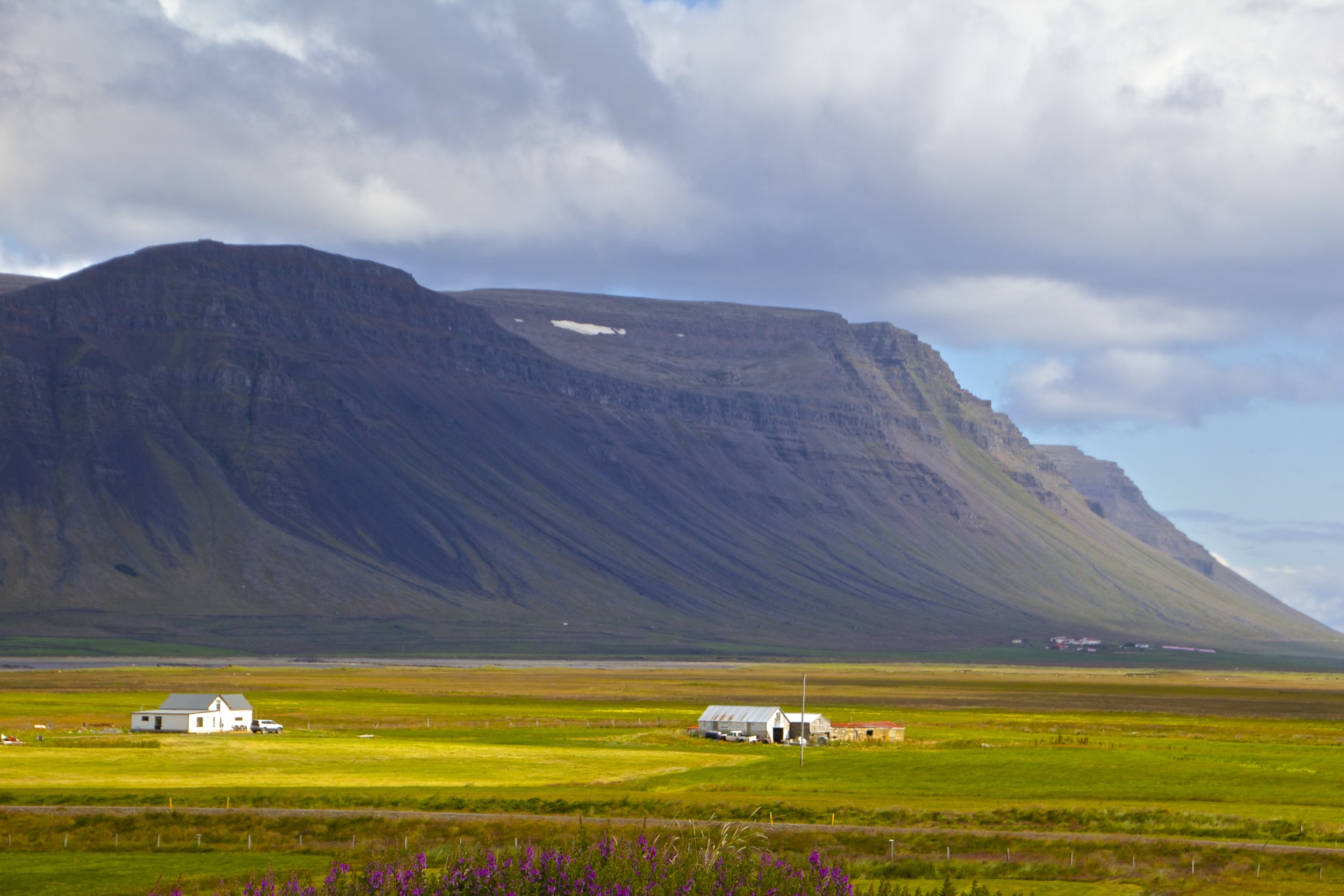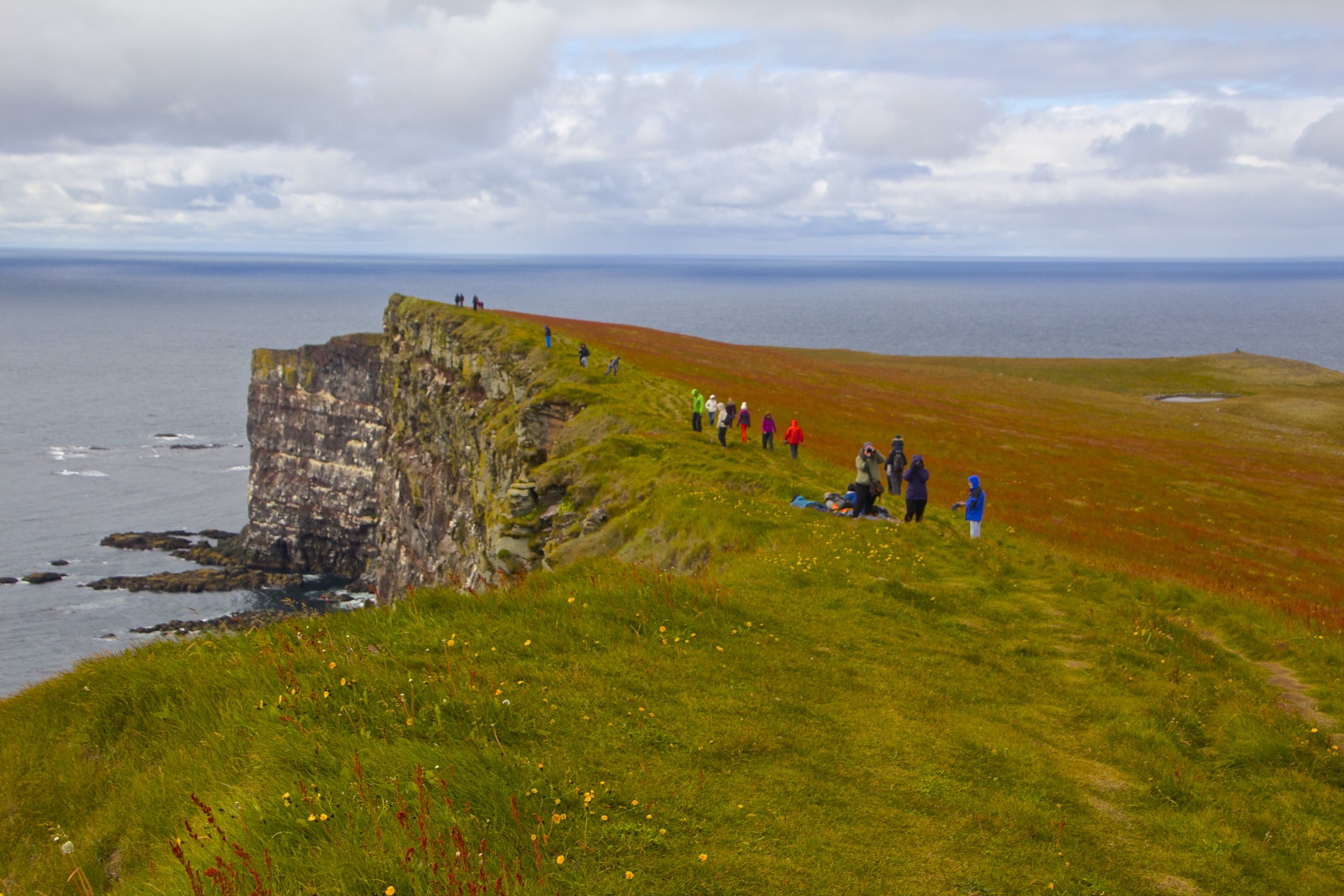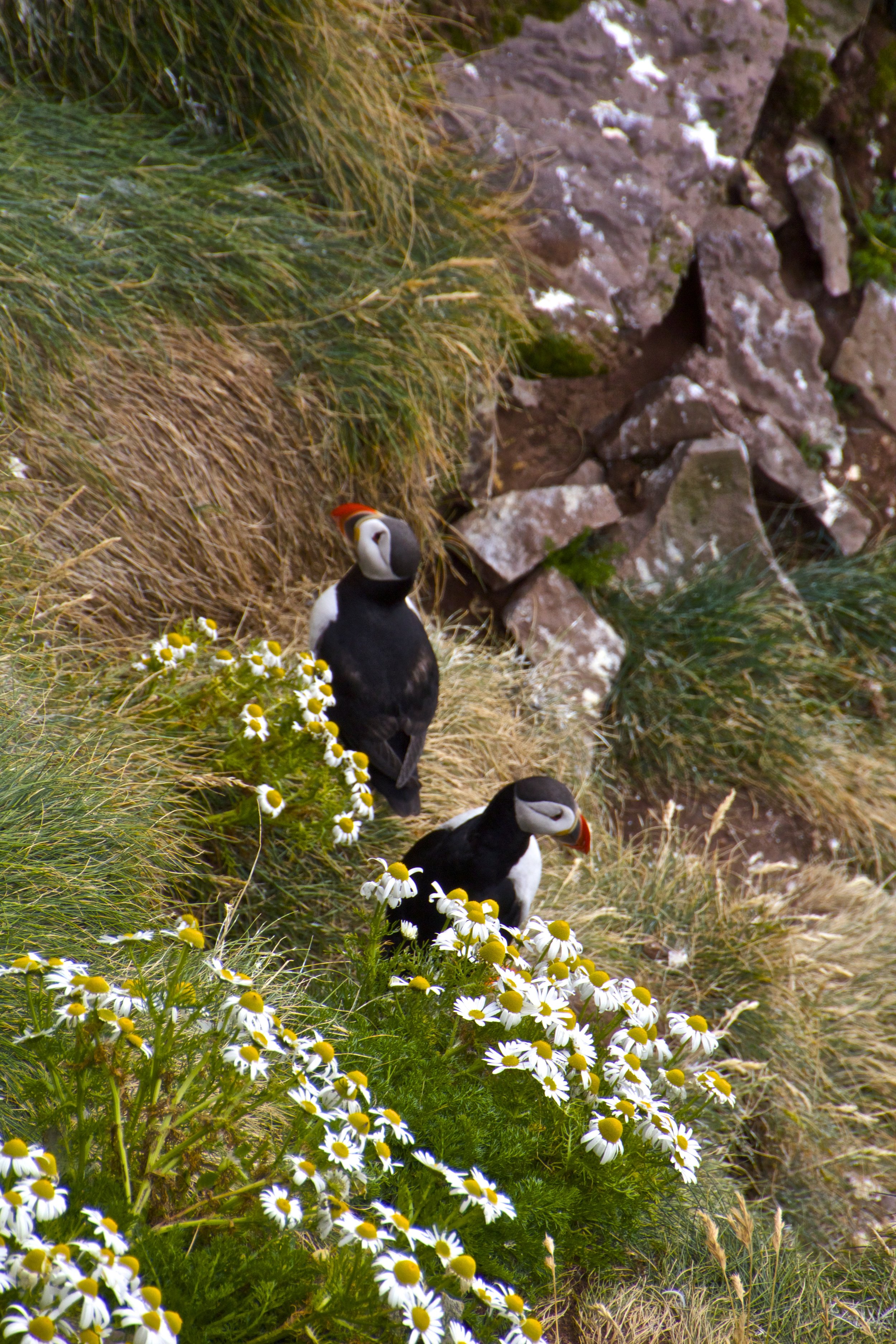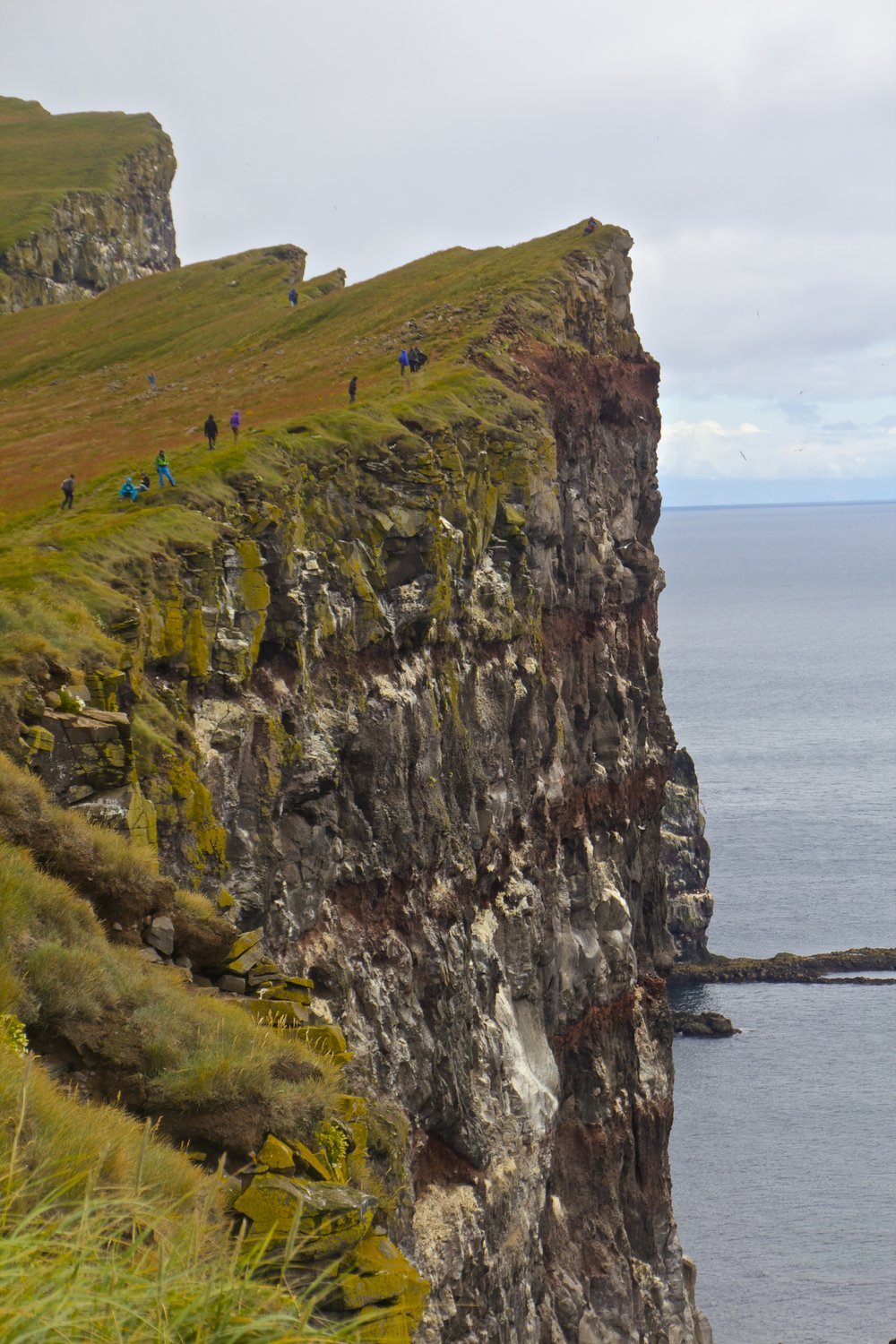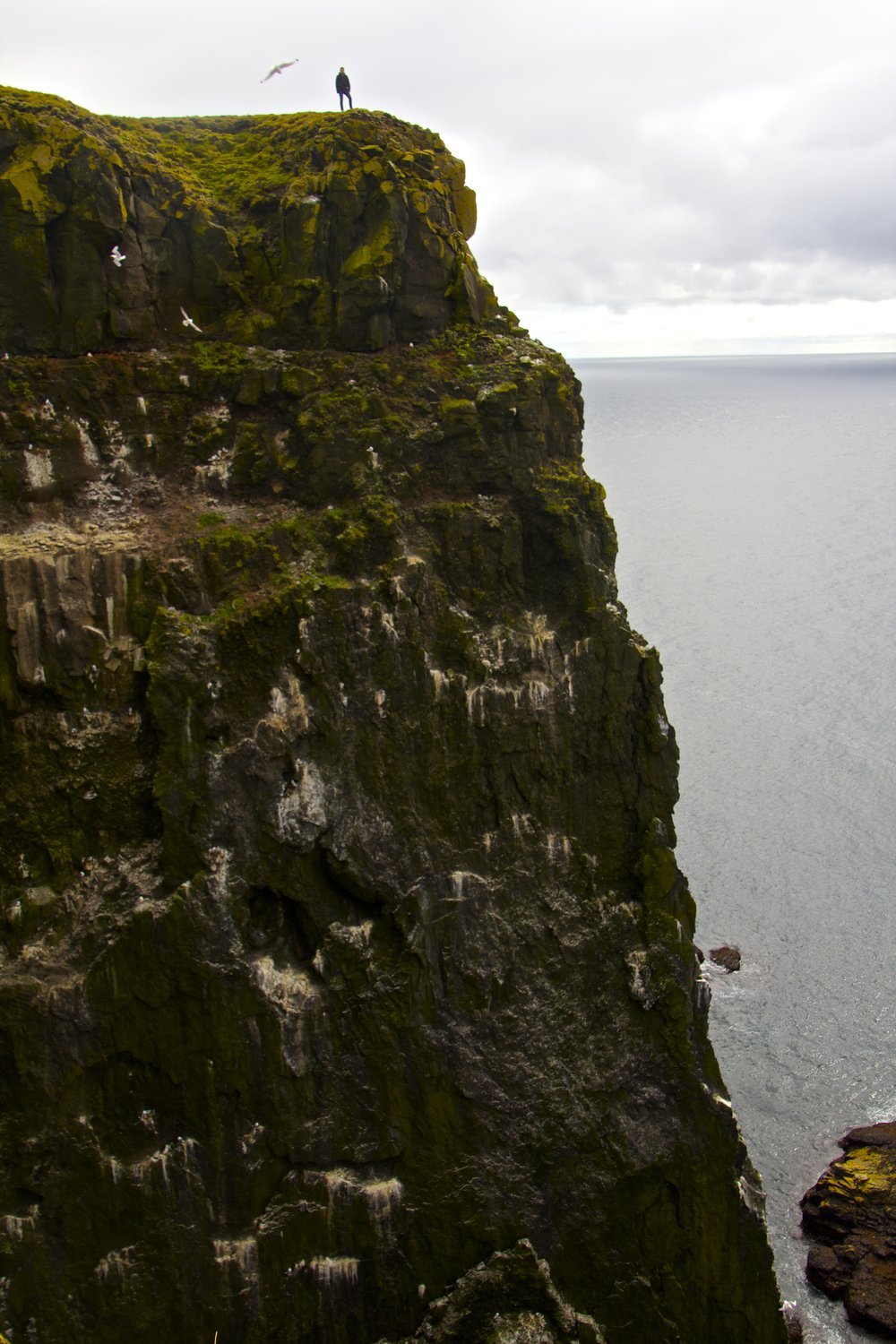This quest brought us to the edge of the world, literally, to the bone-chillingly massive cliffs of Látrabjarg. Here’s a spoiler alert for you: it was mind-blowingly gorgeous. A friend of mine recently pointed out that I’ve said similar things about a great many of the places I have visited recently, so let me up the ante a bit: this was one of the top 5 most beautiful places I’ve seen, EVER.
The gauntlet has been thrown down!
But let’s back up a bit…
If you remember my travel plans article, you know that I had hoped to make it to Iceland’s northerly Hornstrandir National Park to see the Hornbjarg Cliffs. However, as we delved deeper into the Westfjords, I would learn that the ferry into Hornstrandir can cost upwards of $500! That’s the problem with locations that are only accessible by boat. He who owns the boat owns the world. This was lesson that I first learned in Indonesia. This ferry was going to be a bit out of our price range, so it was back to the drawing board.
We were staying in heart of the Westfjords, in the town of Ísafjörður, with a couple that my brother had spent a large part of the summer with. (Thanks again Matthildur & Gummi!) It was here that the idea of tracking down the elusive arctic puffin was first presented to me. To find these little birds, we would need to drive more than 6 hours over some of Iceland’s most dangerous roads to the most eastern-most point of the Westfjords. For all intents and purposes, this was going to be the edge of the world.
We planned to set out from Ísafjörður as early in the morning as possible. However, we had stayed up late at the local pub the night before, so our “early morning” didn’t actually start until about 10am—10:30 once we had walked to the nearest kaffi shop and back to kick-start our day.
It was a foul morning. Cold, light drizzle misted down on our heads as we walked our coffee back across the weathered cobblestone of Ísafjörður to our parking spot. The clouds hung low, covering all the mountains in a dense fog. In these conditions, we had a treacherous drive ahead of us. We even considered abandoning the whole idea, but in Iceland the weather patterns change quickly enough that the weather could very well have changed by the time we reached our destination. Furthermore, in the prohibitive landscape of the Westfjords, it is known that there can be significant variation in climate, even between neighboring fjords. So, with a shrug, we put the key in the ignition, sped out of town, and hoped for the best.
Our Route:
The Elf-Negotiator
Immediately to the south of Ísafjörður there is a giant tunnel. It runs for 30-some kilometers, and saves hours of drive time. These sorts of tunnels are a relatively recent development in the Westfjords. It was not too long ago that we would have needed to take a long, scary detour over cliff-side roads made of loose gravel. This tunnel was the first (and only) time we were spared from the normal dangers that accompany travel through the Westfjords, but it came at a price.
The folklore of Iceland is vivid. Tales of elves, wizards, ghosts, giants, trolls, and everything else you can think of populate the stories that have been passed down generation to generation. In fact, many Icelanders live in such isolation that they still believe in many of these things. According to a study done in 1994, 54.4% of Icelanders said that they believed in elves. And who knows—maybe they’re right!
In Icelandic folklore, it is said that elves live inside rocks. And of course, because it is a volcanic island, Iceland is full of rocks. So, in some particularly rocky places, roads have been built to weave and wind in seemingly nonsensical ways in order to avoid disturbing any elves in their homes. So, I’m sure you can imagine the challenges posed by the prospect of tunneling through a rocky cliff. There’s a not-so-old story from the Westfjords in which a construction crew that was trying to dig one of these tunnels, but kept running into mysterious problems. They suspected that elves were to blame.
So what did they do?
They called in an ELF NEGOTIATOR of course!
Yes, that's exactly what it sounds like. Apparently the elves made demands, the construction crew met those demands, and the project was finished (almost) according to plan.
I couldn’t stop laughing when this was explained to me.
The Drive To Látrabjarg
Many of the mountain passes in the Westfjords are jaw-droppingly, palm-sweatingly high. However, a few more fjords southwest of Ísafjörður, there is a particularly high road. The altitude here is such that the typical Icelandic mossy-green landscape gives way to nothing more than volcanic dirt. On a rainy morning like this one, it was actually closer to mud than dirt.
I'm pretty scared of heights, so as we drove upwards towards this piece of road, my brother (who had done this before) was doing his best to freak me out. However, to his dismay, as soon as we arrived at this fateful stretch of road, we drove into a denser fog than anything I’ve ever experienced. Although, at these altitudes, I suppose it’s not really fog; it’s a just a cloud. The grass that had surrounded us had now given way to black mud. As we inched our way upwards, we could barely see 5 feet in front of us. Still, this muddy road continued on ahead of us, leading us higher still. The air grew thinner. I could feel our altitude changing, but with such poor visibility, height became an abstract concept.
We stopped to take a few pictures in the fog, but it was not until we were winding our way down the opposite side of this mountain face that the clouds finally began to give way.
At the base of this road, we came across a small homestead where we stopped for some coffee and waffles. Icelanders love waffles for some reason.
Driving from there, the weather would eventually begin to improve. The Westfjords stretched onwards in front of us, a beautiful obstacle course of gravel roads, rocky cliffs, and arctic tundra. Aside from a couple scary moments on the narrow cliff-side roads, it was a pretty smooth drive. Here is some of what we saw:
Eventually we came upon a large, rusting shipwreck. This shipwreck is apparently the oldest steel ship in the Westfjords. In a country as small as Iceland, there is no shortage of random superlatives like this.
This shipwreck marked a turning point in the landscape around us. From here on out, as we approached Látrabjarg, we began to see sandy beaches, and the light blue water normally associated with shallow tropical waters. In our sub-arctic climate, these colorful waters and sand dunes seemed extremely out of place, but that did not make them any less beautiful.
As we approached the edge of Iceland, the roads grew rockier, and the winds grew colder. Then the roads took a sudden turn for the worst and we began a steep climb uphill. It lasted the better part of an hour, and by the end of it, we had reached Látrabjarg.
Where The Puffins Roost
When I initially arrived at Látrabjarg, it wasn’t immediately clear if I was even going to be able to find these puffins. All I saw were grassy cliffs stretching off into the distance. It was beautiful, but where were the puffins? Well I soon found out… but I didn’t like the answer.
Puffins apparently only live on cliffs. Nowhere else. Now, I don't mean near cliffs, or around cliffs. I literally mean ON cliffs. You won’t find a puffin anywhere that you can’t also find a thousand-foot drop.
This meant that in order to see them, I had to lean over the side of the cliffs and pray that there would be no sudden gust of wind or crack in the ground beneath me. And in order to photograph them, I had to lay flat on my stomach with my nipple-line on the edge of that cliff, so that my arms, head, and camera were outstretched over the thousand-foot drop beneath me. Did I mention that I’m scared of heights yet? My palms are literally getting sweaty again as I write this, so I’m just going to show you the damn puffins already:
Aren’t they cute?
They're like little penguins crossed with toucans!
The Cliffs At The Edge Of The World
As I walked along the cliff-side, the sun began to come out. Suddenly I found myself in a vast field of the most brilliantly colored wildflowers I’ve ever seen. Clouds blew quickly by overhead, casting fast-moving shadows over these fields. The salty wind from the North Atlantic blew waves through the flowers and grass like ripples through an endless sea of colors.
In front of me, this landscape just continued onwards forever. Before giving way to the sea, the cliffs curved upwards, like foam clinging to the side of a giant, invisible coffee mug. I trekked upwards, looking for the highest point, but every time I came to a ridge, I could see higher ground off in the distance. So onward I walked, lost in this moment, wildflowers at my feet, and the great blue ocean stretching endless on into the distance. I could almost hear beautiful music in my ears, even though I knew there wasn’t any music playing.
Despite the cold arctic wind, the heat of the sun had warmed me up to the point that I took off my coat. I was tired, so I sat down with the ocean to my back, and the fields of flowers in front of me. I expected to feel the hard ground beneath me, but the many layers of grass, moss, and flowers created a softer surface to sit on than any mattress pad or cushion. It was perfect. It was almost too perfect—surreal even, as if I was still asleep in my bed, having a vivid, emotional dream. How can this place exist?
I sat there in the grass for what felt like a long time, just soaking it in. You don’t get many moments like this in life. So when you notice that you’re in one of them, you’ve got to make it count.
Eventually we decided that it was time to get up and hike back. After all, we had a 6+ hour drive back through the Westfjords to Ísafjörður ahead of us, and it was already getting late. However, with Iceland’s continuous summer daylight, we’d barely noticed the time passing at all.
We got back to Ísafjörður safe and sounds, but my mind was still here.
I was sad to leave this place. I often catch myself daydreaming about it.
(sigh)
Up next, I’m going to try something new. I’m excited to share it with you all!









